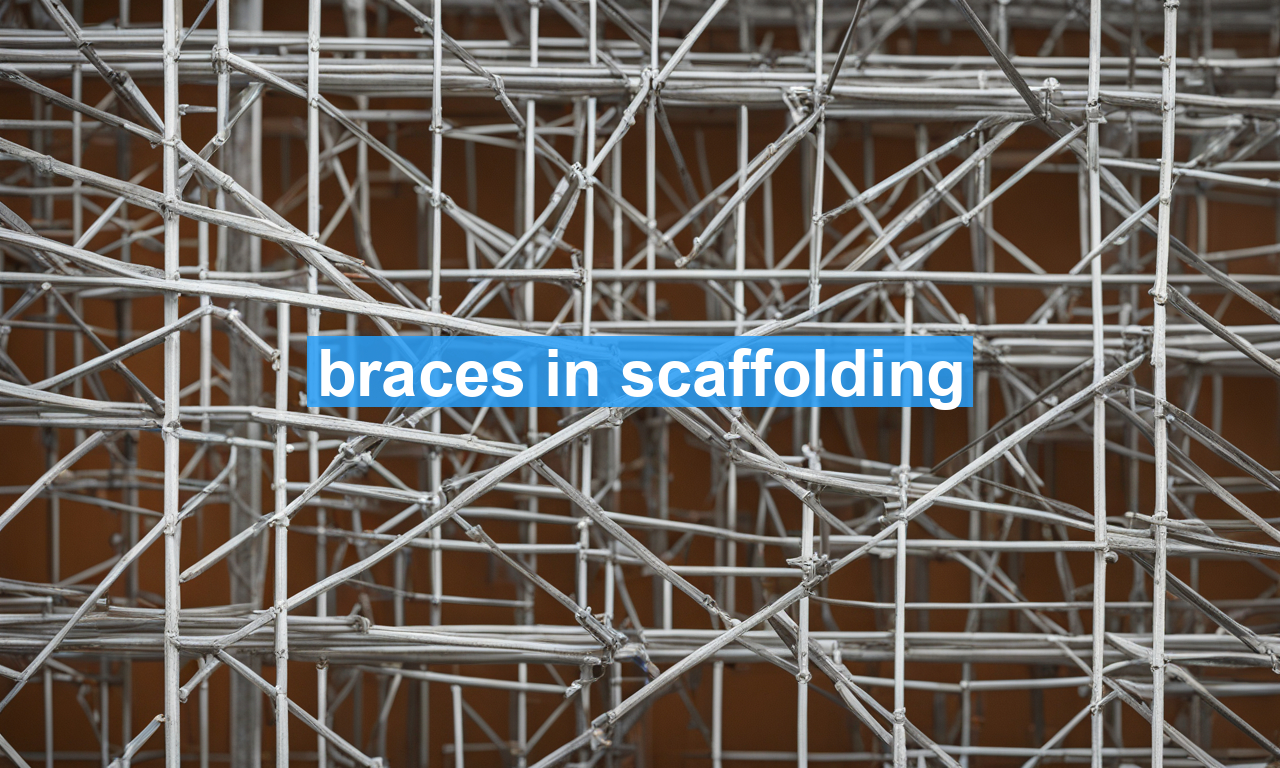Are you working on a building project and wondering how to boost safety and stability? You’re in the right place! Braces in scaffolding are the unsung heroes of any construction site, enhancing the structure’s balance and reliability. Today, we will delve deep into the importance of braces in scaffolding, answering common questions, and offering tips to leverage them effectively. Ready to bolster your expertise? Let’s get started!
What Are Braces in Scaffolding?
Braces are vital elements used to strengthen and stabilize scaffolding. Most commonly, braces are made of metal tubes that connect various parts of a scaffold structure. Think of them as the solid bones that keep the body—your scaffold—upright and functional.
Types of Braces
There are several types of braces used in scaffolding:
- Horizontal Braces: These are placed horizontally to stabilize adjacent scaffold frames.
- Diagonal Braces: Positioned diagonally, these braces prevent the scaffold from swaying.
- Cross Braces: These form an X shape and are essential for stabilizing the scaffold both horizontally and vertically.
Why Are Braces Important?
Without braces, scaffolding structures would be prone to instability and eventual collapse, which can lead to serious accidents. Here’s why braces are indispensable:
Enhanced Safety
Braces provide the necessary support to keep the scaffolding rigid and firm. This ultimately leads to safer working conditions for everyone involved. For instance, according to the Occupational Safety and Health Administration (OSHA), proper scaffolding can prevent accidents and save lives.
Increased Load-Bearing Capacity
With appropriately placed braces, the load-bearing capacity of scaffolding is significantly enhanced. This is crucial for supporting not just workers but also tools and materials used during construction.
Legal Compliance
Most building codes and regulations require scaffolding to be adequately braced. Failure to comply can result in hefty fines or work stoppages.
How to Properly Use Braces in Scaffolding
Understanding the importance of braces is only half the battle. The real game-changer is knowing how to use them correctly.
Choosing Quality Materials
Quality is non-negotiable when it comes to scaffolding materials. Ensure you are using durable, high-strength metal braces that conform to industry standards. For more detailed guidelines, you can refer to IOSH recommendations.
Correct Placement
Positioning the braces correctly is crucial for effective stabilization. Here are some tips:
- Horizontal Braces should be positioned securely between adjacent ledgers.
- Diagonal Braces must form a V or X shape across bays to help prevent sway.
- Cross Braces should intersect at various points to strengthen the entire scaffold frame.
Regular Inspections
Routine checks are necessary to ensure that braces and other scaffold components remain intact and functional. Inspections should be carried out at least once a week and after any event that could affect the scaffold’s stability, such as heavy winds or excessive loads.
Common Misconceptions
Let’s debunk some myths that often circulate regarding scaffolding braces:
“More Braces Mean More Stability”
Not necessarily. While having adequate braces is essential, overcrowding a scaffold with braces can lead to a complex and potentially hazardous setup. The key is to use braces judiciously and as per structural requirements.
“Braces Can Be Added Later”
Incorrect. Braces should be installed as you erect the scaffold, not as an afterthought. This ensures that the scaffold is stable from the get-go.
Conclusion
Braces in scaffolding are fundamental to the safety and efficacy of construction projects. From enhancing safety and load-bearing capacity to ensuring compliance with legal standards, these modest components are indispensable. To get the most out of your scaffolding braces, always opt for quality materials, ensure correct placement, and conduct regular inspections.
By following these guidelines, you’ll not only build structurally sound scaffolding but also create a safer environment for everyone on-site. To dive deeper into scaffold safety, check out this comprehensive resource by NIOSH.

